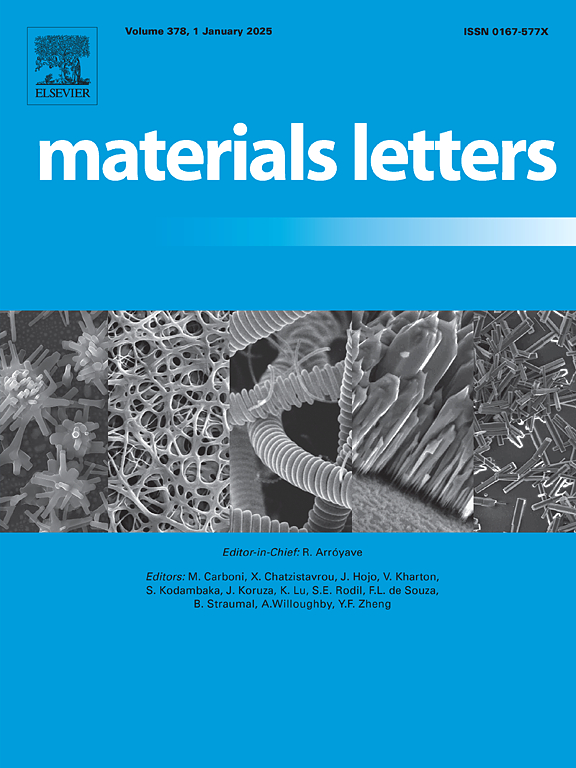Effects of grain boundary geometry on rotation-induced Sn whisker formation during thermal cycling
IF 2.7
4区 材料科学
Q3 MATERIALS SCIENCE, MULTIDISCIPLINARY
引用次数: 0
Abstract
While previous studies linked whisker formation to various factors in Sn films, the influence of local grain boundary (GB) characteristics on nucleation mechanisms needed further investigation. This study examines how GB geometry and misorientation changes influence whisker nucleation by combining experimental characterization and crystal plasticity simulations. We establish a comprehensive whisker nucleation model where: (1) GB yielding occurs under local compressive stresses, influenced by GB misorientation; (2) normal displacements accumulate at GBs when shear stresses exceed a threshold; (3) localized grain rotation compensates shape changes; and (4) subgrain formation occurs as rotation intensifies, leading to the formation of new grain boundaries. Our results reveal that GB geometry controls this process by determining normal displacement differences through coefficient of thermal expansion mismatches and dictating whether newly nucleated grains achieve necessary configurations for whisker growth.
热循环过程中晶界几何形状对旋转诱导锡晶须形成的影响
虽然以往的研究将Sn薄膜中晶须的形成与多种因素联系起来,但局部晶界(GB)特征对成核机制的影响有待进一步研究。本研究结合实验表征和晶体塑性模拟研究了GB几何形状和取向错误变化对晶须成核的影响。我们建立了一个综合晶须成核模型:(1)晶石屈服发生在局部压应力下,受晶石取向错误的影响;(2)剪切应力超过阈值时,正常位移在GBs处积累;(3)局部颗粒旋转补偿形状变化;(4)随着旋转的加剧,亚晶的形成导致新的晶界的形成。我们的研究结果表明,GB几何结构通过热膨胀失配系数确定法向位移差,并决定新成核的晶粒是否达到晶须生长所需的配置,从而控制了这一过程。
本文章由计算机程序翻译,如有差异,请以英文原文为准。
求助全文
约1分钟内获得全文
求助全文
来源期刊

Materials Letters
工程技术-材料科学:综合
CiteScore
5.60
自引率
3.30%
发文量
1948
审稿时长
50 days
期刊介绍:
Materials Letters has an open access mirror journal Materials Letters: X, sharing the same aims and scope, editorial team, submission system and rigorous peer review.
Materials Letters is dedicated to publishing novel, cutting edge reports of broad interest to the materials community. The journal provides a forum for materials scientists and engineers, physicists, and chemists to rapidly communicate on the most important topics in the field of materials.
Contributions include, but are not limited to, a variety of topics such as:
• Materials - Metals and alloys, amorphous solids, ceramics, composites, polymers, semiconductors
• Applications - Structural, opto-electronic, magnetic, medical, MEMS, sensors, smart
• Characterization - Analytical, microscopy, scanning probes, nanoscopic, optical, electrical, magnetic, acoustic, spectroscopic, diffraction
• Novel Materials - Micro and nanostructures (nanowires, nanotubes, nanoparticles), nanocomposites, thin films, superlattices, quantum dots.
• Processing - Crystal growth, thin film processing, sol-gel processing, mechanical processing, assembly, nanocrystalline processing.
• Properties - Mechanical, magnetic, optical, electrical, ferroelectric, thermal, interfacial, transport, thermodynamic
• Synthesis - Quenching, solid state, solidification, solution synthesis, vapor deposition, high pressure, explosive
 求助内容:
求助内容: 应助结果提醒方式:
应助结果提醒方式:


